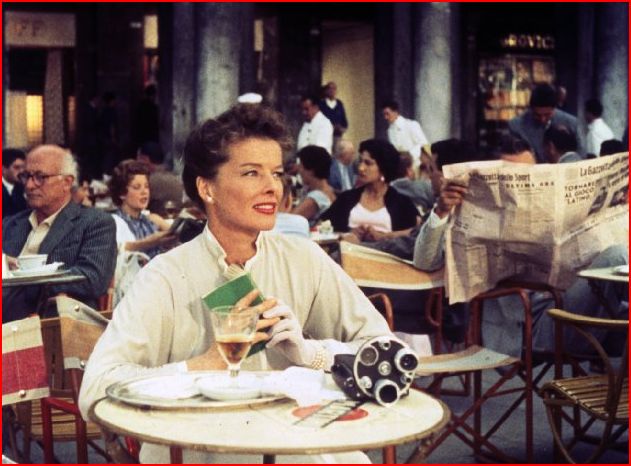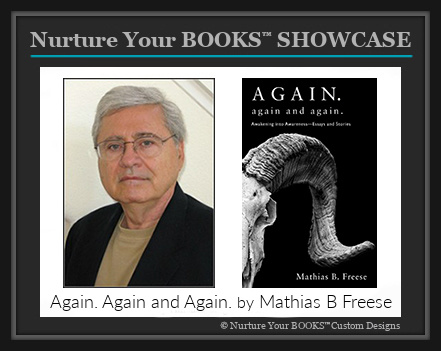 Several days ago I caught David Lean’s Summertime on TMC. I had seen it in 1955 when a teenager and one scene, I dimly recall, I could not grasp, but now I do. Oh do I. But I am getting ahead of myself. The following morning at breakfast with my wife I began to muse about Hepburn’s memorable performance when other associations came to mind about Lean’s films. I recall The Bridge on the River Kwai which I had seen in a Manhattan movie palace at 17. My friend and I were annoyed that tickets for Around the World in Eighty Days were not available and on a lark took in Lean’s movie which was playing around the corner. Alec Guinness was a new actor to us, and Obi Wan Kenobi to new generations two decades later. So many years later the movie proved a serendipitous and fortuitous surprise. Of the two movies which one would you want to save in your memory bank?
Several days ago I caught David Lean’s Summertime on TMC. I had seen it in 1955 when a teenager and one scene, I dimly recall, I could not grasp, but now I do. Oh do I. But I am getting ahead of myself. The following morning at breakfast with my wife I began to muse about Hepburn’s memorable performance when other associations came to mind about Lean’s films. I recall The Bridge on the River Kwai which I had seen in a Manhattan movie palace at 17. My friend and I were annoyed that tickets for Around the World in Eighty Days were not available and on a lark took in Lean’s movie which was playing around the corner. Alec Guinness was a new actor to us, and Obi Wan Kenobi to new generations two decades later. So many years later the movie proved a serendipitous and fortuitous surprise. Of the two movies which one would you want to save in your memory bank?
I thought of Brief Encounter with Trevor Howard and Cecilia Howard, a little jewel, of trysting lovers which took place in large part in an English underground with its stations and tea shops. The whistles of the oncoming engines served at times as interruptions (in fact mechanical actors) to the lovers who cherish every heightened moment of their illicit affair, both of them married. It was in black and white. So two Lean movies with trains and then the associations came fast and furious. In Lawrence of Arabia Lawrence leads a vicious assault on an armed Turkish train crossing the desert and massacres all aboard while discovering his own personal lust for blood — he comes out behind a baggage car with his dagger drenched in blood. All three movies cited here served as interrupters or instigators of character action. They are a vital backdrop.
And I thought again. In Dr. Zhivago (1965) I recall trains again, often crossing the frozen wastes of Siberia or carrying Bolshevik troops in a beautiful mounted production with an inert soul; poor Yuri and Lara, loving and losing one another in Russia. Although I did not see Lean’s last production, Passage to India, my wife informed me that trains were involved in that movie. So Lean made at least six films in which trains play a significant role, and Summertime has a final romantic scene in which Hepburn waves goodbye to her lover, Rossano Brazzi, at a train station. And so I must conclude that Lean who was a meticulous craftsman was well aware of the use of trains in his movie career. I wonder what emotional and psychological freight (no pun intended) they carried in his cinematic consciousness.
After all, trains are a most penetrating object, through underground stations, through Asian jungles, snouting across desert wastes, steaming across Indian tracts and frigid tundras. They enter, they pulsate, propel and push, an industrial dynamatic. And in 1959 I did not think about or realize what Hitchcock was up to in the last shot of North by Northwest in which the locomotive enters a tunnel just as Grant pulls up Eva Marie into his berth.
And now I can discordantly return to Hepburn. Hepburn is in Venice, too young to be a spinster, but a virgin, to my mind, on vacation, alone and lonely, and there is a distinction between both words: one is the capacity to dwell within yourself; to be alone is not to be lonely; to be lonely is to be mildly scared, to fear, to be bereft, and to lose compass. Hepburn is lonely. She has a shadowy crater in her self. And in a remarkable scene that I will quickly paint in, a scene that I did not understand then before I grappled with being lonely and being alone, many years later. (We grow old too soon and smart too late, the aphorism opines.)
On a hotel terrace, newly arrived, luggage still unpacked on her bed, Hepburn looks about and sees couples holding hands, others holding arms around one another’s shoulders; she sees a couple she was engaging in conversation walk off, hand in hand. She is observing people who are in relationship, who are connected and you can sense palpably the pain she is feeling and her eyes mist up and she is almost in tears and her eyes fill up and you are watching a marvelous actress painting in her canvas of pain, loss and despair. You are watching a great “silent motion picture” actress strut her self silently. And Hepburn walks about this terrace and the camera tracks her and one almost tastes what I would call a mild anxiety attack well up from within her. An extraordinary moment. Hey Lean, what did you tell Hepburn to elicit that from her? Hey Kate, did you tell him you didn’t need direction?
Since I now know that kind of extraordinarily desperate pain, watching her was like watching a great diva approaching the great moments of her aria and doing it beautifully; one wants to cheer the expertise, the heft, the oomph and rapture of the performance, the commanding presence.
Without too much back story, Hepburn visits St. Mark’s Square (Piazza San Marco) and Lean films this gloriously, the flocking pigeons, the sun licking the surfaces of the Italian stone columns, bathing them in golden hues. The ancient figural clocks above ring out the time. And here Hepburn cut across my heart in another way. While in St. Mark’s filled with tourists, lovers, waiters, bistro tables, strollers taking in the beauty of the plaza, she looks above her and takes in through her eyes the beauty all about her, much as if the sun’s conic shafts of sun rays pass through her eyes, lighting up her interior walls.
Infatuated, she is starved for the chance to absorb all this glory, to be alive, to be in the moment, to realize she is alive. Apparently open to the experience, at some level, she wants or craves to be awakened — to become aware. And the great Kate, several times in the movie, has the camera look down upon her face as her eyes well up with the aspiration to absorb what is before her, to squeeze the orange of life until its pips squeak. It is not an epiphany, it is the moment before. I, too, remember that well, the desire to be saturated for just a bare moment in life.
Several times in the movie we see Hepburn trying to capture her experiences on a movie camera, one that has a key to wind it up with three lenses mounted on the front on a round wheel, close-up, normal and wide angle. She films a storefront, people walking, a canal near her hotel early on in the movie, in a feverish attempt to “capture” experience. And I am reminded of Japanese tourists in Paris who had their cameras screwed into their faces as if they might not capture everything they came about, rather pathetic. In other words, Kate allows the camera to come between herself and what she sees; she is into capturing experience instead of registering, a common malady with human beings up to this moment. Half way through the film, the camera disappears and Kate enters into registering and experiencing the events and people in her life. Venice gifts her with an Italian lover, the rest is plot.
As Kate waves farewell to her Italian lover on the train that is taking her back to her world, one feels a tinge of sadness, not only for her decision not to stay and completely surrender to her self, free of American provinical values and conditioning, but to continue working on her newly found capacity to enter the world, to be vibrantly alive and open. At least when she returns, one feels, that experience will not be recorded and registered through artifice, a camera, to wit, but captured within the lens of the self.





